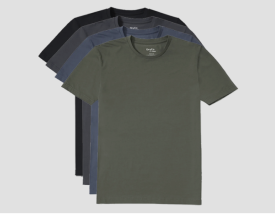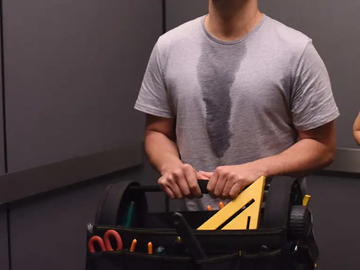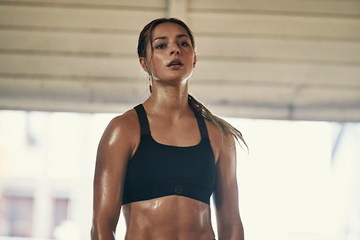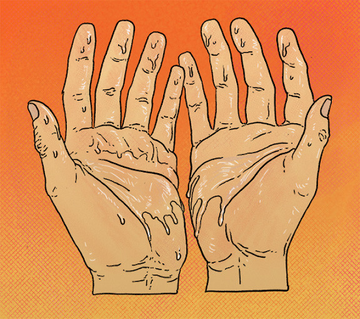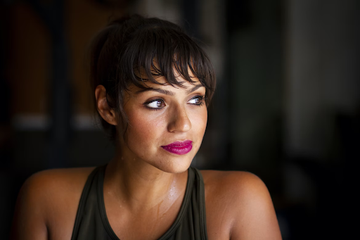You might hear some folks using the terms “breathable” and “moisture-wicking” interchangeably, but they’re not the same thing. Some clarification is in order. Although most moisture-wicking fabrics are breathable, not all breathable fabrics are moisture-wicking.
The best fabrics you can find usually offer some degree of breathability and moisture-wicking ability, but you should know the differences between them so you don’t make wrong assumptions. This post will take a look at how they differ, and how effective they are for sweat management.
Moisture-Wicking vs Breathable Fabrics
So what exactly distinguishes breathable fabrics from moisture-wicking fabrics? Essentially, it’s how they’re made, which influences how they handle moisture.
Moisture-wicking fabrics contain tiny holes known as “micropores”. These micropores draw water (sweat) away from the skin and onto the fabric’s surface. Once the water reaches the surface, exposure to air and higher temperatures causes that water to evaporate. This process is known as capillary action, and helps a person feel cool and dry faster.
Breathable fabrics, on the other hand, are less sophisticated. They simply contain holes (spacing) that allow air to pass through the fabric more freely so that moisture on the body will evaporate faster. Breathable fabrics work similarly to moisture-wicking fabrics in a sense, but lack the sweat-pulling power of moisture-wicking fabrics.
That brings us to which one is more effective at keeping you dry. Moisture-wicking fabrics outperform breathable fabrics. Breathable fabrics only allow air to passively escape through material whereas moisture-wicking fabrics actively pull water from your body.
But breathable fabrics aren’t useless. Clothing made with breathable fabrics are typically lightweight and have great temperature-regulating abilities, namely, an ability to keep you cool. And moisture-wicking fabrics by nature are breathable, so if you choose the right ones, you can get the best of both worlds.
How Fabrics Rank in Breathability vs Moisture-Wicking Ability
You’re probably wondering which fabrics give you that combo of moisture-wicking ability and breathability. Don’t think too hard. We’ve provided a chart below to help you figure that out.
|
Fabric |
Breathable |
Moisture-Wicking |
|
Bamboo |
Yes |
Yes |
|
Cotton |
Yes |
No |
|
Chambray |
Yes |
Somewhat |
|
Linen |
Yes |
No |
|
Merino Wool |
Yes |
Yes |
|
Micromodal |
Yes |
Yes |
|
Nylon |
Yes |
Yes |
|
Polyester |
Yes |
Yes |
|
Polypropylene |
Yes |
Yes |
|
Rayon |
Yes |
No |
|
Silk |
Yes |
Yes |
|
Wool |
Yes |
Yes |
You’ll notice that all the fabrics mentioned above are breathable but not moisture-wicking. It echoes what we mentioned above - most moisture-wicking materials offer some breathability but breathable fabrics don’t automatically offer moisture-wicking ability.
What Should You Wear for Sweat Management?
When you choose a fabric (or fabrics) to wear, you’re probably thinking about many factors. Price, comfort, durability and other factors come into play and that’s why in general, there are no good or bad fabrics. But if you suffer from hyperhidrosis or just sweat a lot due to your activities (or climate), then you should choose moisture-wicking fabrics over choices.
Moisture-Wicking Fabrics for Hyperhidrosis and Heavy Sweating
The pattern is probably clear to you now - moisture-wicking fabrics that naturally offer breathability, work best to keep you cool and dry. The most effective sweat-resistant clothing incorporates these materials and are recommended most by medical experts and sufferers of hyperhidrosis alike.
Know Your Material for Sweat-Resistance
With so many terms out there (ie. moisture-wicking, absorbing, breathable), it’s understandably hard to remember the differences between them all. None of them are necessarily better or worse than each other, but if you sweat heavily, moisture-wicking fabrics are your best friends.
They’ll cool and dry you off faster than any other type of fabric, while offering the comforts and features of non-moisture-wicking fabrics. They’re a convenient and cost-effective form of relief you can rely on that’s not medication or some other form of medical treatment.
Looking for sweat-proof, moisture-wicking fabrics that can help you feel and look dry? Check out our line of sweat proof t-shirts made with patented technology to help you dry off fast!
